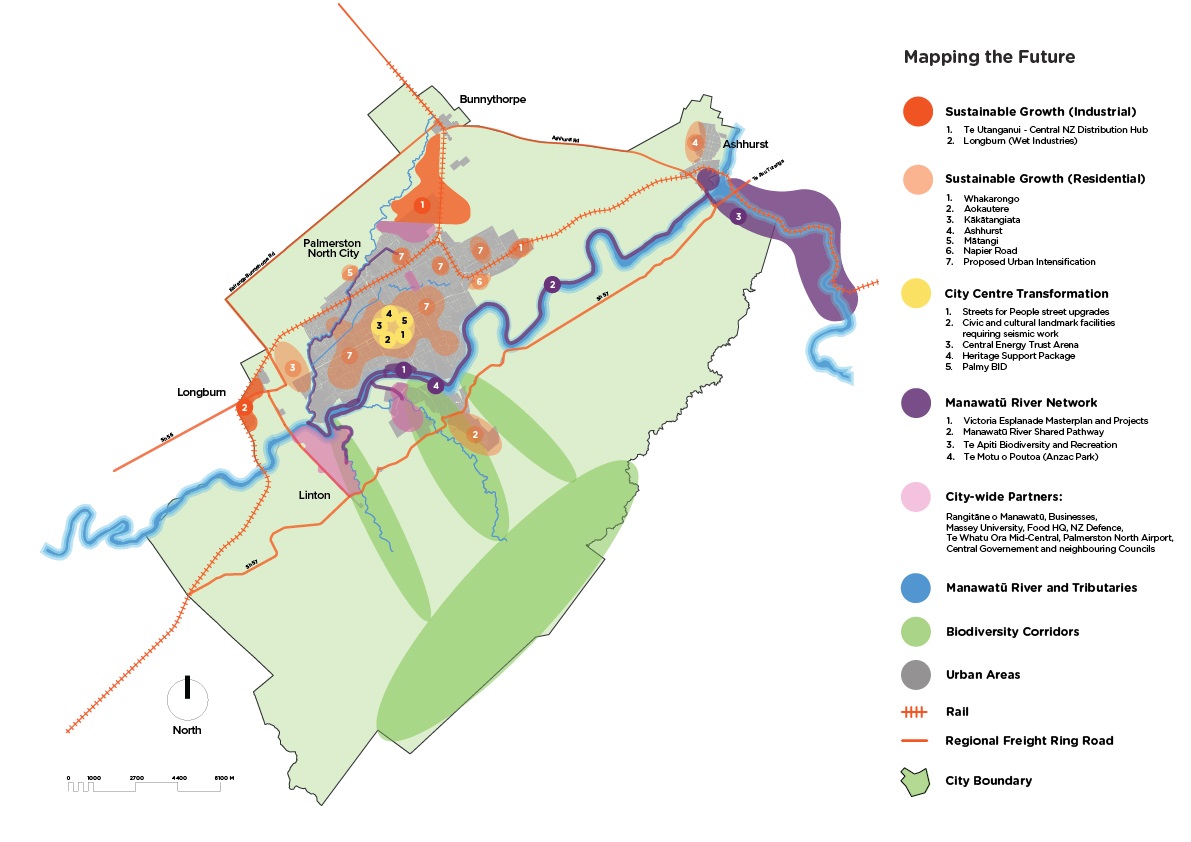City growth
Most of us already know that Palmy is the place to be, but others are starting to cotton on, leading to significant growth in our city. This is driving a lot of our work.
By 2034 we’re expecting a population of more than 103,000 people – 9,000 more than now. That means more housing will be needed within our existing urban areas, as well as expanding into new areas. We’re also seeing commercial and industrial growth as our city becomes known for being one of the fastest growing freight hubs in the country. Many big companies already call us home, and many more are wanting to. KiwiRail’s plan to have a freight hub to the northeast of the city will only drive that growth more as part of Te Utanganui – Central New Zealand Distribution Hub.
Whether it’s residential growth or industrial growth, the work behind the scenes remains the same. It starts with investigating and beginning the process of rezoning land for this growth. You can read more about this work on the pages linked below and in our proposed Future Development Strategy, which we’re also consulting on at the moment.
We also need to make sure we have the infrastructure and funding to support this growth. Where we are developing in existing areas, that typically means we will need to install bigger water pipes and more pump stations, as well as safety and efficiency improvements for our roads. Where we are developing in new areas that means new roads, new water pipes, pumps and connections and new parks and community facilities. Other service providers also need to be involved to provide things like telecommunications, fibre, gas and so on.
This is costly work – the infrastructure costs associated with this growth in our long-term plan total $296 million. There’s also $2 million in operational costs for investigations and modelling to ensure we’re allowing development in the right place.
While developers pay fees for new developments in the city to help support these large infrastructure costs, we need to borrow to cover the upfront costs. Given the constraints on our borrowing, we will need to look at other funding options for this work. If we can’t seek external funding, this may slow down some of this important development for our city, including Aokautere, Kākātangiata and Ashhurst.
These pages outline our growth needs and what we’re doing in more detail
Our plans for housing
Our plans for water
Our plans for transport
Future Development Strategy
Our spatial plan
